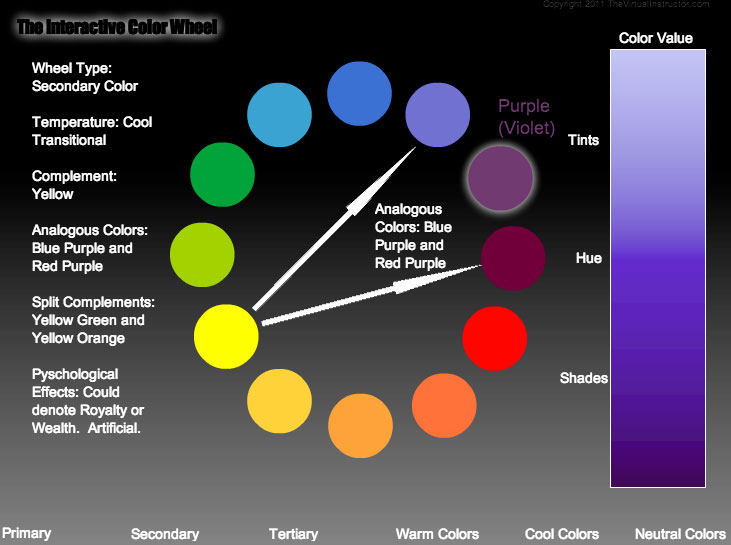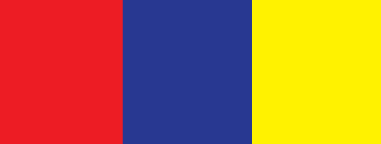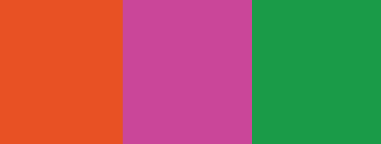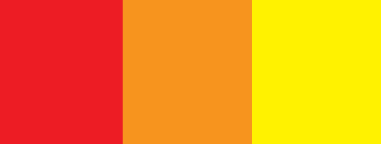Art Using All the Colors on a Color Wheel
Color is the element of art that refers to reflected light. Colour theory is defined as a theory because it cannot be proved. Theories are by and large accepted, despite the fact that they cannot be proven. Laws are accepted because they can be proven.
At that place are volumes and volumes of information available near color. This page, while thorough, volition present color theory in an "easy to understand" fashion. It is an exciting, ever-changing science. Color has an affect over how nosotros feel well-nigh objects, how we behave, and how our bodies react to circumstances.
What is color theory?
If color theory is simplified, information technology tin be broken down into 3 parts- The colour wheel, colour value, and color schemes. Each role of colour theory builds on the previous. Understanding each department of color theory fully, volition help you better understand its importance in the cosmos of art.
Color Theory Function 1 - The Colour Bicycle
The color bicycle was developed past Sir Isaac Newton by taking the color spectrum and bending it into a circle. If y'all follow around the colour wheel, you will find the aforementioned order of the colour spectrum- red, orange, yellow, greenish, blue, indigo(blue-violet), and violet. Some retrieve it by the acronym ROY G. BIV.
The color cycle is made up of three different types of colors - Primary, Secondary, and Tertiary.
The primary colors are red, yellow, and bluish. They are chosen chief for a couple of reasons. Starting time, no two colors can be mixed to create a primary color. In other words, primary colors can simply be created through the use of natural pigments. Secondly, all other colors found on the colour bike can exist created by mixing primary colors together.
The secondary colors are orange, green, and purple. Secondary colors are created by mixing equal parts of whatsoever 2 primary colors. Xanthous and blueish volition requite you green. Red and blueish volition create purple(violet). Red and yellow will give yous orangish.
Tertiary colors are created by mixing equal parts of a secondary color and a primary color together. At that place are six tertiary colors- red-purple, ruby-orange, blue-green, yellow-green, blue-regal, and yellowish-orange. Observe that the proper way to refer to tertiary colors is by list the primary color offset and the secondary color, 2d.
Click on the image beneath to check out The Interactive Color Wheel...

Colour Theory Part 2 - Color Values
The second function of colour theory deals with color values. Value is the darkness or lightness of a color. When dealing with pure color (hue), value can be affected by adding white or black to a color. Calculation white to a color produces a tint...

Adding black to a colour produces a shade...

When grays are added to the color, the intensity of the color is affected. Intensity is related to value.
Color Theory Office 3 - Colour Schemes
Color schemes are ways colors are put together in an intelligent way
- Monochromatic - literally means one (mono) colour (chroma). And so a monochromatic
color scheme is made upward of one color and it'due south shades and tints.
- Coordinating colors - are colors that are next to each other on the colour wheel.
When used every bit a color scheme, analogous colors can be dramatic. Ex. Blue, blue-green, green, and yellow-dark-green; red, red-imperial, purple, blue-majestic
- Complementary colors - are colors found directly across from each other on the color bicycle. Complementary color scheme provide potent contrast. Ex. Blue and orangish, blood-red and dark-green, yellowish-green and red-purple.

- Colour triads - consist of three colors found on the colour bike that are every bit spaced apart from each other. Ex. Cherry, blue and yellow or orange, light-green and purple.

- Split complementary - colour schemes are made up of a colour and it'south complements closest analogous colors. Ex Blueish, xanthous-orangish and ruby-red-orangish. Cherry-red-orange, red-royal, dark-green.

- Warm colors - colors that are usually associated with warm things. Ex. Red, xanthous, orangish.

- Cool colors - colors that are usually associated with absurd things. Ex. Blue, purple, green

Color Theory Terms and Definitions
- Colour - Chemical element of fine art derived from reflected light. We see color because light waves are reflected from objects to your eyes.
- Color bicycle - colour spectrum bent into a circle.
- Primary colors - The near basic colors on the color wheel, crimson, yellow and blue. These colors cannot be made by mixing.
- Secondary colors - colors that are fabricated by mixing two primary colors together. Orange, greenish and violet (purple).
- Third colors - colors that are fabricated by mixing a primary color with a secondary color.
- Hue - the proper noun of the color.
- Intensity - the brightness or dullness of a color. DO NOT Misfile WITH VALUE.
- Color value - the darkness or lightness of a colour. Ex pinkish is a tint of ruddy.
- Tints - are created past calculation white to a color.
- Shades - are created by adding black to a color.
- Optical color - color that people really perceive- also chosen local color.
- Arbitrary colour - colors chosen past the artist to express feelings or mood.
Source: https://thevirtualinstructor.com/Color.html
0 Response to "Art Using All the Colors on a Color Wheel"
Post a Comment